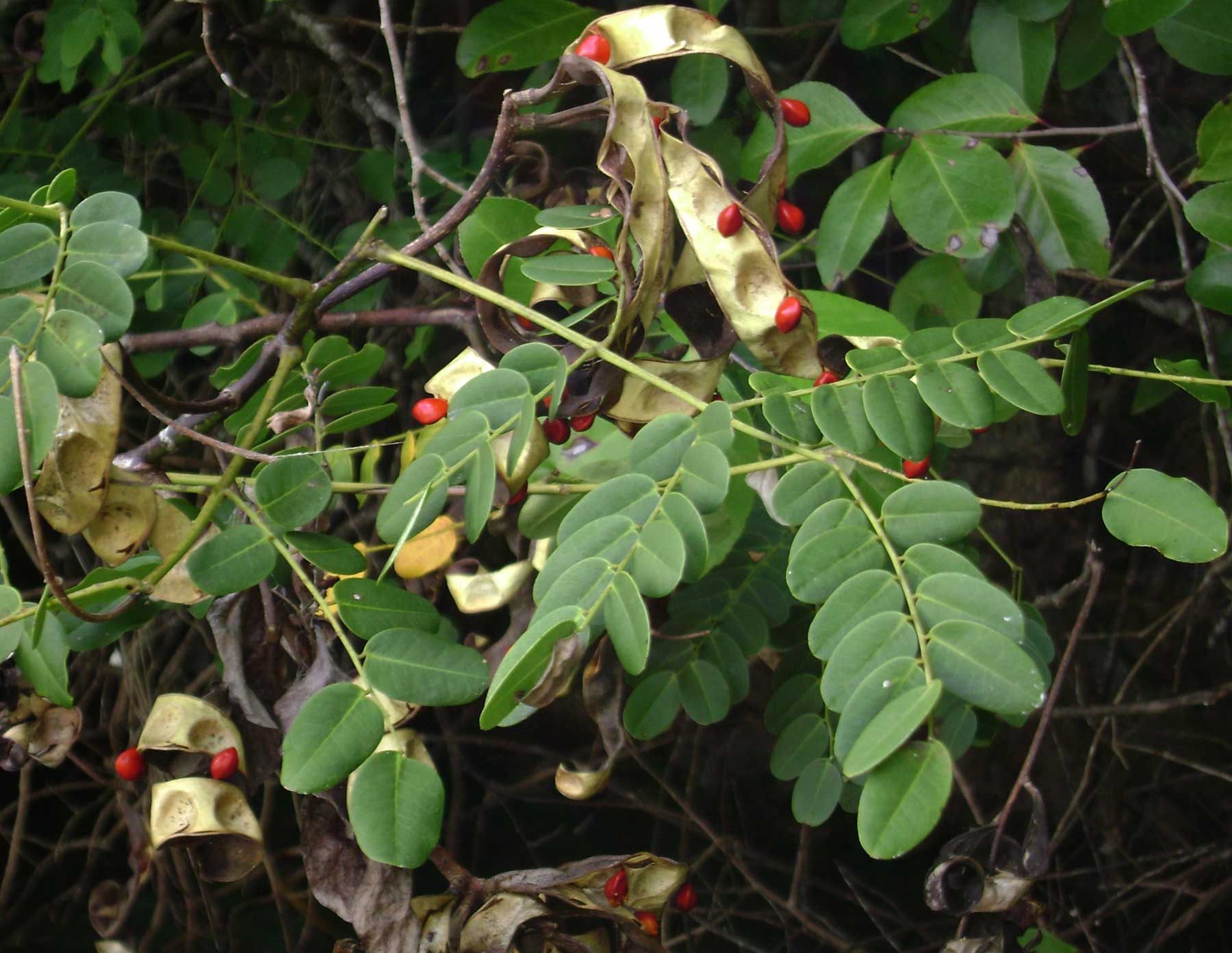! Nouveau site ici !
Vita > Plantae > Magnoliophyta > Magnoliopsida > Fabales >
Fabaceae > Adenanthera
Adenanthera pavonina
(Bois de condori)


 | *** - **
| *** - **
Vita > Plantae > Magnoliophyta > Magnoliopsida > Fabales >
Fabaceae > Adenanthera
Adenanthera pavonina
(Bois de condori)

Zone 10
Un arbre à feuilles caduques atteignant 7-20 m de haut. Il s'étend sur 4 m de diamètre. Il perd beaucoup de ses feuilles pendant la saison chaude et sèche de l'année. La tige est dressée et élancée. L'�... (traduction automatique)
→suite
⬀
Le  donne accès au menu
donne accès au menu (c'est votre point de repère) 😊 ;
En dessous vous avez la classification, à partir de la vie (Vita, premier rang) jusqu'à la classe au dessus de la plante, dont vous trouvez ensuite le nom scientifique/botanique (latin) puis le nom commun (français), le cas échéant ;
C'est aussi un lien vers la fiche complète (tout comme la ✖, en bas à droite, et le +, en dessous de la description) ;
Vient alors l'illustration (ou ce qui la remplace, en attendant), la comestibilité :
Et en bas
⬂



